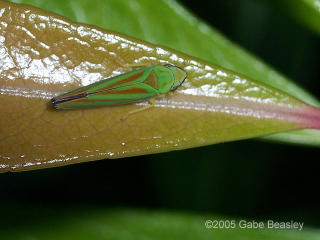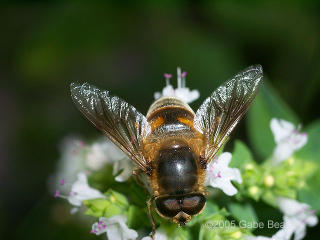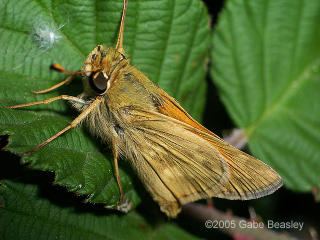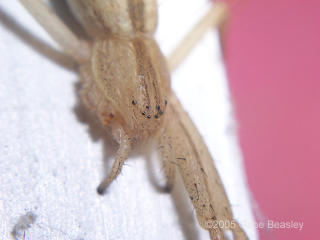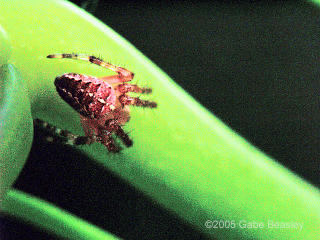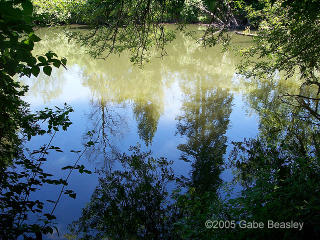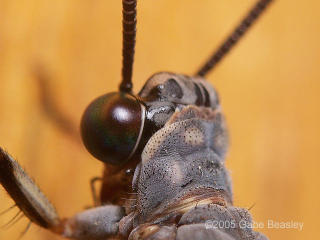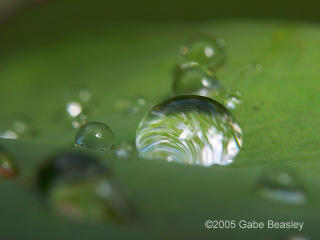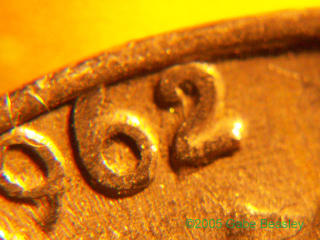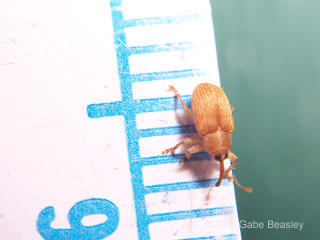
It
surprises me the number of people who are
superstitious enough to not cross this path! Honestly, I'd be a bit
uncomfortable myself with this black cat. The eyes, I don't know how that happened!
IMPORTANT -- TO SEE THESE SHOTS IN DETAIL
ONCE AGAIN, PLEASE BE SURE TO CLICK ON THE PICTURES TO SEE THEM AT A MUCH BIGGER DETAILED SIZE.
USE YOUR INTERNET BACK-ARROW TO RETURN TO TO MY SITE. (the button on the very top of the left hand side of your computer screen)

Can you top this! I shot this in Guam, a sport that only becomes possible when typhoons and tropical storms bring harsh winds. Talking to the guys with my camera in a plastic bag from the sea-air-- I wished they would invite me to try it but I knew from how hard it was for them to do it I might end up hitting that island or damaging this equipment. Just for this gear they said it was about $1500.

A common site across Asia. I am amazed at some of the things that I've seen in my travels. This bike is probably as old as the man riding it. There are other examples, in
Lombok and the tiny island off the coast of
Lombok,
Gili air (
glieire) where they still use horse-carts and it's not for tourism or anything. There were no cars or visible motorbikes I saw on the island. It was amazing to see when I went there that in the mid 1990s when I was there transportation was
primarily horse-carts. The equivalent to a horse and buggy but different. Smaller horse. I sure preferred this to the other way people get around down there! You can see one of these carts if you go back a a few months to see my main Bali shots. See below.

Accidents are incredibly
un-common I have been told, it feels and looks so dangerous in the crowded streets and very common chaotic places it's incredible how good these people get with there motorbikes. Cars are rare as most locals cannot begin to afford them. Trying this kind of travel a few times, I
swore I won't ever do it again. The traffic situations in Bali makes any traffic situation in the US look like this nice open road. As I've shown you before the entire family fitting on one small motorbike. These people sit as if they are on a couch doing 40 miles an hour through rushing traffic. Notice how this woman is just sitting sideways and holding on to nothing at all. And of course, not a helmet for the lady. What's up with that?

Bali still has many traditional ways. Unlike the usual shows in Hawaii, Guam and some other tourist spots-- you get to see allot more of the real way people still live. If you click on this picture you will see that this guy is carrying probably hand made, hand tools. My Guide and driver
Komong, took me on a photo-tour where I used a Canon Rebel 2000 and a Nikon EM to shoot a number of film shots. I still get exited about waiting to see how the picture will turn out. I tell other photographers--Don't forget film. It's fun and keeps you sharp in your knowledge about lenses and your SLR. I still have 100s of pictures of Bali to go through and of that quite a few worth showing. Be sure and look back through the monthly archives to see my main posts of highlights in Bali.

This is one of the I estimate over 50+ species I've seen and photographed out on my lights. I'd not seen this one yet. It's small, and you can tell from it's
antennas having all those extra antennas that this is a male. They need more sensitive antenna to pick up on the pheromones of females. The detection process is so incredible it almost seems super natural. Just a few molecules of the pheromone is all it takes for a male moth to find a mate. This insect
sense is way
beyond dogs, vultures, sharks and most if not all other species of any animal at detecting the smallest traces of chemicals. Moths are ultimate sensors. Insect antennae are comparable to turned inside out noses. Males can smell the hint of a trail of a female from miles and miles away. More or less--it is amazing that we
truly are very distantly related to the incredible insects and spiders. We do share a common ancestor of extremely primitive life Eons ago. As it is with all animals. Even insects share the senses that we do. They are so alien, but yet dissimilar in there
sences. Sometimes far
superior to us. This moth has less then an inch long wingspan. Moths
interest me. They come in so many shapes and sizes.
Creatures of the night, the
variety of species is mind-
boggling even in the semi high-desert conditions I live in here in The
Dalles.

This is a true-bug that I have yet to identify. the ruler here is in mill miters. It's very small. One of the many "bugs" out here. True bugs were called that probably because they have a nasty
habit of landing on people and
stabbing them with there
proboscis just to taste if your edible. They suck liquids from plants, others like
assassin bugs, attack other insects and small pray. Many so called spider bites are
mistaken for these tiny bug bites. The "kissing bug" is one that will land on your lips and like a vampire-- so you get the idea. There are other reasons why this family of insects. They include the "stink bugs". Some of them are really painful as I found out working on these projects. However, they do not use
venom to my knowledge. They are a bit like over-grown
mosquitoes. Few species bite people, but they do. The bite which is actually a prick from there
mouth parts, called a
proboscis is like a needle. Bugs, the so called "true bugs" are appropriately named.

A close up of an
interesting water-related insect that wound up way too far from it's home. Click on the shot to see more detail.

ONLY IN SMALL TOWNS do you get a chance to see this! I was on a public bus with a compact camera but managed to squeeze off one
ok picture. The shutter speed was slow so it's blurred a bit--but this is an old model T or A. I am not certain.

This tiny spider kills more ants in your home then any ant traps you lay out. These micro-
warriors measuring less then 8mm or so are very
fascinating to me. They live in our homes and often are so small that they survive and not get harmed. They are harmless and related to the
American house spider.


This ruler is in millimeters. A mosquito. Watch how a crop can bring you even closer to the shot at the edge of depth of field. I shot this was shot at about F30 or so.

HIGHER MACRO FROM THE SAME PICTURE
Depth of field here, this is a crop of the same mosquito. This is where mega-
pixel power is as important as F-stop and flash. This image is 3 and a half
millimeters long and it's still in focus. I shoot most my pictures at 8 to 10mp these days.

A blast from the past, this tiny sac spider is eating a bug that can't be identified. Spiders use a "sucking
stomach" and a system that allows them to wet the pray with
enzymes that break it down and some soft insects become
un-
recognizable. They can only consume this liquid diet through a
stomach which actually can nearly keep sucking constantly like a
vacuum cleaner.

BABY AMERICAN HOUSE SPIDERS just emerged from there egg soon to scatter and populate the species all around. My lens only went to F22 on this but here are some
spider lings. This is a 35mm shot as are several others. To me, film is still fun, the
excitement of waiting for how well you did and the mental needs to think seriously to calculate your shots is far more
challenging then digital. If you don't have an expensive light meter, a small digital compact camera can provide some information about what your film picture will be like. To know your settings for basic stuff. For some reason every compact camera I've seen remains stuck at F8 making really shallow macro shots more difficult without the
extensive modifications I invented from
experimenting to make my own macro lenses. To get above F8--I used a film can as a "
aperture plug" in the line of lenses. A pinprick filed down plastic round will stops-down your compact camera if you can center the pin-prick and get it right--depth of field can be seriously increased. It's very difficult but I've done it up to approximately F30-40.
A WORD ON OPTICAL MEDIA vs FILM NEGATIVES
Digital makes photography sometimes to quick. I tell other photographers, don't forget your film days. In fact, alarmingly, your
negatives will long-out last the CD-Rs and DVDs you burn your pictures into. They do not last. There are estimates, but especially
inexpensive disks I've been told should be kept away from light
sources and you can bet that in ten years they may be
damaged. The other problem. Well, how many people do you know who still have a
Jazz drive? Zip drive? Those old hard disks that you could change in plastic cases? They now are very hard to find. In another 10 or so years it is very possible that computers will move on to a new way of storing data. Ultimately, flash memory I think will replace hard-drives and possibly some optical media like DVDs. You can fit a full-featured move in a chip that you could swallow like a pill. If somebody told me that just a few years ago, I'd have said "you've been watching to much sci-fy."
In the future we will have new technology. I keep shooting some 35mm because the
negatives will last for 100s if not thousands of years if they are kept safe. And they are not coded into a system that would have to be read by antiquated computers that someday will be very hard to find.

Another 35mm film shot of the American house spider
Achaearanea tepidariorum. A VERY harmless spider that is fun and I think looks cool. Flashy Huge and or incredible spiders to me are not as incredible as the ones that survive anywhere. This is my
favorite species of spider. I say they are very harmless because the body shape looks like black
widows and or sometimes sometimes brown
widows. The key is as simple as the color. They are not black or have bright displays of reds to warn of poison. She is related to the black
widow, yet there is no relation in terms of toxic
venom to humans. In fact, I
caught several of them bare handed and have been bitten three times in one day and four the next. There was almost no pain, just a slight
tingling. I found this out when I was a kid. I no longer catch spiders very often. The pain of this spiders bite was about 1/10
th of a bee-sting in terms of effects on me. This is a nice spider. They sometimes will drop out of there webs when frightened in a ball and stay that way, in this mode the do bite--but as far as spider bites go--this is about as harmless as you can get. And they should be allowed to live
around your homes to take care of mosquitoes, cockroaches, ants, and other so called harmful insects.

A hard to find species around here. Huntsmen. My abilities of getting details excites me for the ideas of "digital bug collecting" not requiring killing the species. High resolution digital cameras and nice lenses provide a great deal of information. This is a very tight crop. Click to see larger shots-- use back arrow in your
Internet browser to get back to my site.
